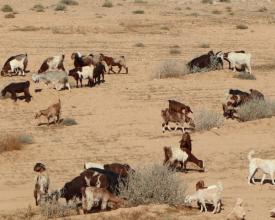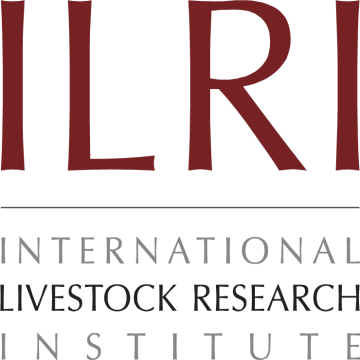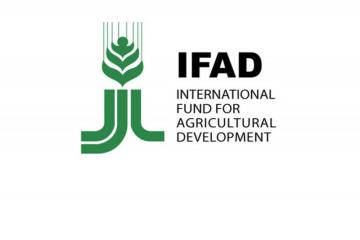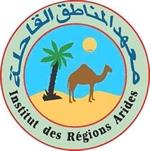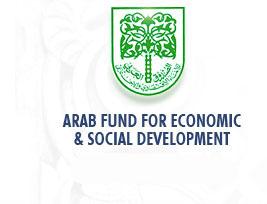
A participatory sustainable rangeland management toolkit with a holistic and multidisciplinary approach

Sustainable Rangeland Management (SRM) toolkit is tested in North Africa and West Asia (NAWA region), with a specific focus on Tunisia, Jordan and Uzbekistan, and offers a package of holistic and multi-disciplinary tools for addressing the root cause of rangeland degradation. The toolkit will help communities, policy and development actors use key sustainable rangeland management practices at local scale or in context-specific environments expecting to ensure that ecosystem services are used sustainably and reach a level of land degradation neutrality, increase livestock feed (forage) production, enhance ecosystem services.
Context
Challenges addressed
Globally, the land and ecosystem restoration agenda has been dominated by forestry and agroforestry approaches, neglecting other land and site-specific approaches. In rangelands, overgrazing, intensive agriculture and urban land expansion are leading to land degradation and the expansion of desertification. These challenges are being worsened by climate change and population growth. Development partners have made efforts towards the restoration of rangelands, but their approaches have not been holistic. Complicating factors are added to the agenda including recurrent droughts, inefficient policies, weak institutional arrangements, unclear land tenure regimes and the loss of indigenous land use knowledge. Approaches towards rangeland rehabilitation often fail to consider local adoption and sustainability. However, the International Center for Agricultural Research in the Dry Areas and partners have been pursuing opportunities for restorative rangeland management.
Location
Process
Summary of the process
The SRM practices developed under the toolkit have the potential to be implemented across several agro ecosystems. For instance, the Jordan Badia is characterized with shallow crusted soil surface, low and erratic rainfall which make it prone to erosion, practices are then selected to address these constraints and alleviate trend of rangeland degradation. Thus, it is important to associate indigenous local knowledge with science-based technologies using a bottom-up participatory approaches to achieve a desired goal. Thus, it is essential to associate the tools it includes to a particular ecosystem including participation from stakeholders and a social process to accompany the technical process. The potential for replication is high as it combines different methods that fit for different scenarios, combing social and biophysical processes.
Building Blocks
Participatory Rangeland Management and Planning framework
Good governance includes participation because it helps empower beneficiaries and improve planning amongst communities. Therefore, participatory Rangeland Management and Planning (PRMP) provides a framework by which approaches can be adapted to different uses in specific contexts. Those unique features include scale, stakeholders to involve, and the seasonal migrations or movement. The aim of PRMP is to facilitate participatory rangeland management planning in a simplified and practical way while considering the unique framework of natural resource management in rangelands.
Enabling factors
- Continuous dialogue in which relevant stakeholders express their interest and reach consensus on the future rangeland use and management.
- Inclusive process in which all relevant stakeholders are represented and engaged in the initial dialogues, preparation of maps, discussions and agreement.
- Mobilizing local knowledge and integrating with scientific knowledge to shape the planning processes.
- Action oriented, with focus on developing action plans that shape how strategic interventions agreed upon by stakeholders will be implemented.
Lesson learned
For sustainable rangeland management, it is important to use a holistic, bottom-up participatory approach that includes local pastoral communities; otherwise, efforts can be lost. Thus, it is essential to adapt the tools to a particular contexts and ecosystems. Also, to deploy training to accompany the solution and promote simplicity and administrative flexibility to adapt to changing environments and predictions to ensure better management of operations of rangelands. The potential for replication is high as the SRM toolkit combines different methods that are fit for different scenarios and the solution has received positive feedback from beneficiaries.
Technical methods and toolkits
The holistic approach to rangeland degradation includes recommendations for land and resource tenure arrangements and institutional models that enhance land management and reduce land degradation. For example, it tells you when and where to use sustainable rangeland management (SRM) practices. Thus, it may help the guidance on livestock policy, technology and investment priorities for programs but also development agencies, decision-makers, and other international organizations.
The main objective of this toolkit is to enhance rangeland ecosystems services and pastoralists wellbeing through sharing, enhancing, and using knowledge on SRM practices. For any site, a combination of proven technologies is made available with a goal to implement a cost-effective restoration that is holistic and scalable. Furthermore, this toolkit aims to minimize investment failures by providing detailed information about commonly used practices.
Enabling factors
- Site specific: the toolkit offers solutions following a diagnosis which are contextually based
- Participatory: the methodology is based on participatory principles
- Holistic: address the biophysical and socioeconomic linkages and trade-offs existing between the different land uses.
- Flexible approach which relies on day-to-day monitoring where managers must plan and re-plan
- Proven technology based on experience from field undertaken in similar environments.
- Scaling up: Provide latest insights into SRM by presenting relevant good practices in view of scaling up
Lesson learned
The potential to scale up the SRM toolkit is high in the Middle East and North Africa, sub-Saharan Africa and Central Asia. For example, in the drylands in Jordan where the Badia Restoration Programme takes place, soil seed banks have trouble growing because the soil surface is crusted. There are practices within the toolkit that address this issue. When the soil seed back is depleted, selected SRM practices enhances the results compared to traditional methods that are relatively difficult, time-consuming, and expensive, and have tended to result in overly detailed records for just a few locations.
Impacts
- Positive feedback: In Tunisia, the office of livestock and pasture has recognized the positive impact of grazing management, producing livestock feed during favourable year when previously unavailable.
- High impact expectations: it has potential to impact over 1 Mha in Tunisia alone and impact better management and restoration of rangelands in dry areas
- High adoption: the toolkit has high expectations of adoption thanks to the inclusion of indigenous knowledge, and the flexibility to adjust grazing strategies based on climatic conditions, coupled with technologies such as ICT. In 2021, its further adoption started thanks to flexible contractual procedures between administration and farmer.
- Participatory: participatory approaches with focus on pastoralists customary governance institutions
- Multidisciplinary: covers a wide range of topics including addressing physical, ecological, social, and institutional dimensions
- Climate resilient results: increased resilience of the pastoral system to climate change
- Improved management: better management and restoration of rangelands in dry areas using nature-based solutions that harnesses biodiversity and ecosystem services to reduce vulnerability to climate change.
- Holistic approach: the toolkit provides tools to address the root causes in a complex system by understanding the interlinkages within the chosen land, environment, and ecosystem.
Beneficiaries
Land users and policy makers are the main beneficiaries of this solution.
Sustainable Development Goals
Story
“Sustainable Rangeland Management toolkit lays out a holistic and multidisciplinary approach for addressing the biophysical and socioeconomic trade-offs existing between different land uses.” Mr. Mohamed NASRI, ex-Director General of the Office of Livestock and Pastures in Tunisia.
This quote captures the essence of the SRM toolkit precisely, while also implying the shortcomings of earlier restoration effors. This is for example, the lack of involving partners, not combining indigenous knowledge together with scientific findings, and not considering different bio-physical (e.g., topology) and social-economic contexts (e.g., culture or regulation). For these reasons partnerships with both local and international, scientific and executive, social sciences and natural sciences, was at the core of the process. This participatory process led to a flexible, holistic and multi-disciplinary approach for revitalizing marginalized rangelands and ensuring their sustainability. Its potential is huge, only in Tunisia the potential is 2 million hectares! The potential is also to move beyond livestock related policies, extending towards technology and investment priorities for programs, development agencies, and decision-makers.
Working together with so many diverse partners and stakeholders has surely generated insights for managing rangelands resulting in a very positive story. Therefore, such a participatory process will be improved and expanded to reach even more marginal rangelands and to support the dependent livelihoods.

